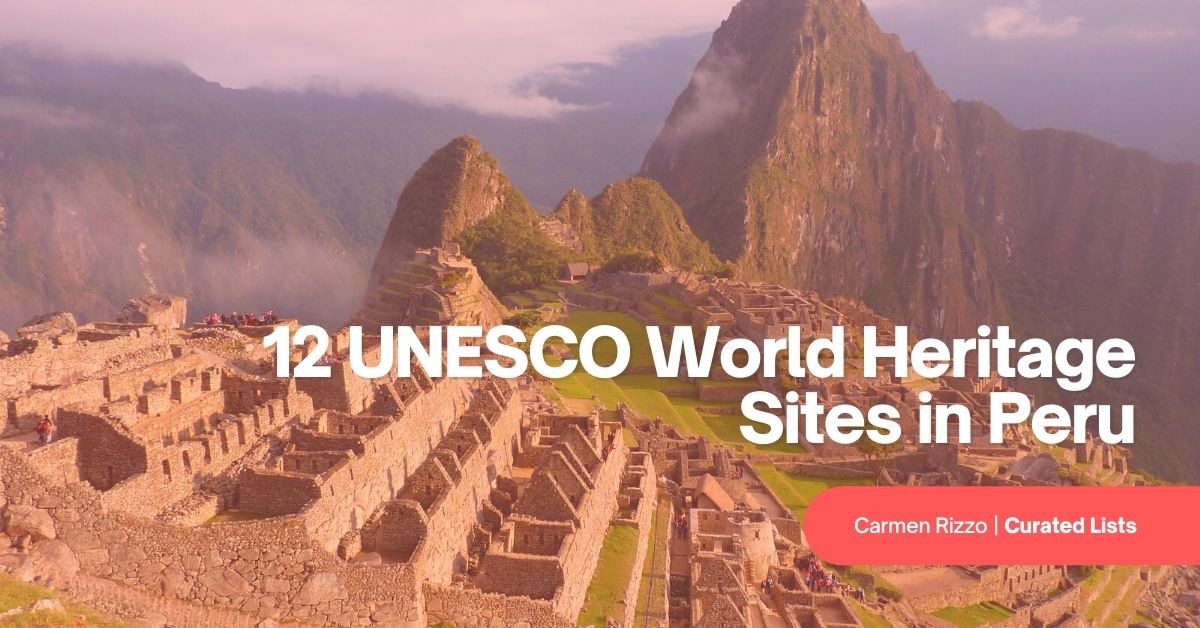
12 UNESCO World Heritage Sites in Peru
The 14 UNESCO Peru World Heritage Sites are part of the 139 World Heritage Sites that are located in Latin America.
A UNESCO World Heritage site is a landmark or area that is legally protected by the United Nations Educational, Scientific, and Cultural Organization (UNESCO). These World Heritage Sites are chosen according to their cultural, historical, or scientific significance, and how they are of outstanding value to humanity.
World heritage sites are divided in three categories: cultural, natural, and mixed. As of July of 2021, there are 1,154 World Heritage Sites worldwide.
Let’s learn all about the UNESCO list of World Heritage Sites present in this beautiful country.
If you are interested in learning about these sites in other countries, check our posts on Mexico and Guatemala!
Let’s Begin!
Cultural
Of the 13 UNESCO World Heritage Sites in Peru, 9 of them are of cultural importance for humanity. Let’s take a look at these places.
1. Chan Chan Archaeological Zone (Zona arqueológica de Chan Chan)
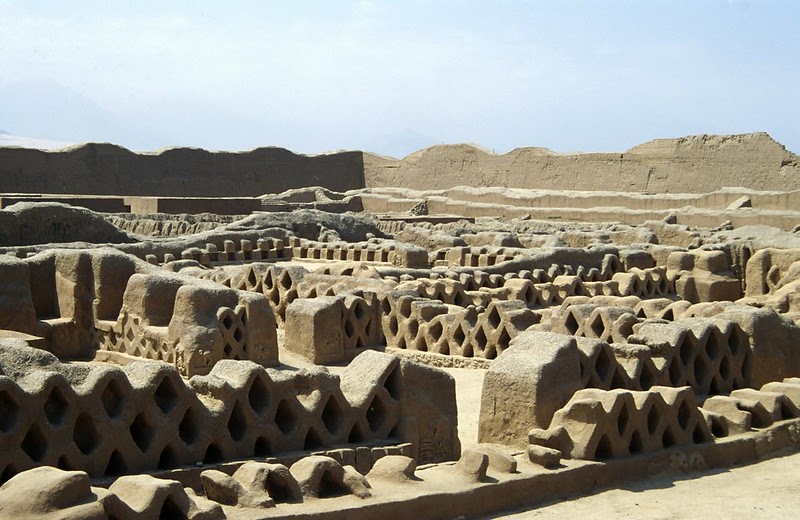
Located in the district of Huanchaco, around 9 hours from Lima, you can find this amazing archeological complex.
Chan Chan was the capital city of the Chimú kingdom, which peaked during the 15th Century, before succumbing to the Inca empire. Because of its historical importance, it was selected to be a World Heritage Site by UNESCO in Peru in 1986.
Chan Chan was one of the most important cities in the region during pre-Columbian America, and the way it was built and the disposition of it show us that when its inhabitants carefully planned its construction taking into consideration political and social strategies. The most important example of this is how Chan Chan is divided into nine citadels, or palaces, that form independent units.
You can explore the ruins and learn about one of the most important Peruvian civilizations when you visit Chan Chan. Meanwhile, you can learn more about this impressive site by watching this video and reading the official UNESCO information about this place.
2. Chankillo Archaeoastronomical Complex (El complejo arqueoastronómico de Chankillo)
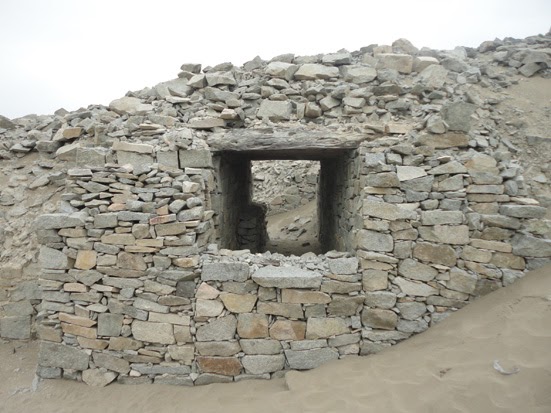
Chankillo is the most recent addition to the UNESCO Peru World Heritage Sites.
This archeological complex is located in el Valle de Casma (Casma Valley) on the north coast of Peru.
This place was founded in the year 500 BC in the middle of the desert. The edifications and layout of this place used this natural gift to use the Sun for a solar calendar. They marked the most important Sun positions with a series of thirteen towers.
In total, Chankillo’s most important buildings are:
- The Fortified Temple – El Templo Fortificado
- The Observatory – El Observatorio
- The Ceremonial Public Space – El espacio Público Ceremonial
- The Thirteen Towers – Las Trece Torres
- The Mucho Malo Hill – El cerro Mucho Malo
Chankillo is a prehistoric site that gives us a glimpse of some of the first civilizations that lived on the whole American Continent. Their way of living shows us the knowledge these people had in matters of astronomy, time, and architecture, taking into consideration that all the town can be considered a gigantic solar calendar.
You can read more about this amazing place on the Official UNESCO Peru world heritage sites online page.
3. Chavin
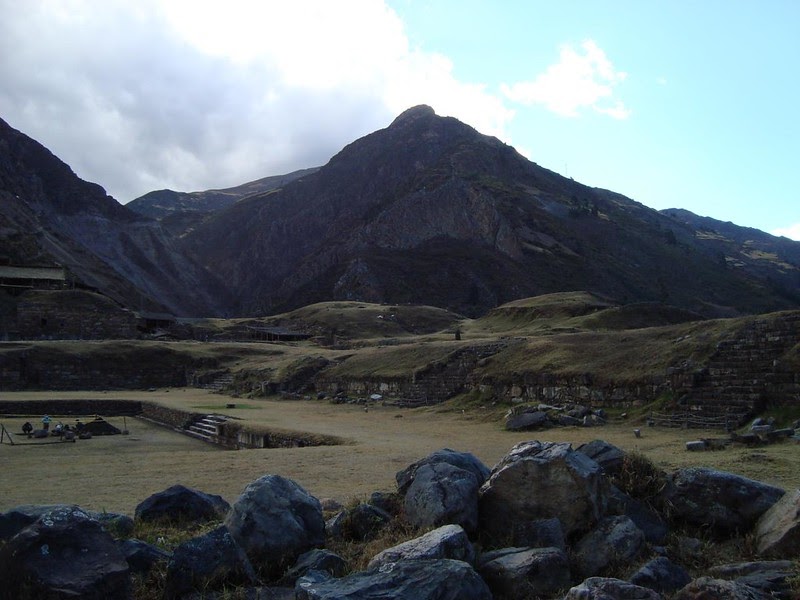
Located in the Huari Province, in the Ancash Department, around 8 hours away from the city of Lima you will find the archeological and prehistoric site of Chavín.
This place was the home of the Chavin civilization, which lived and developed from the year 1500 BC to the year 300 BC. This place is located in the high valleys of the Peruvian Andes.
The archeological vestiges of this civilization show us unique architecture. The city is made up of plazas and spacious terraces surrounded by buildings made of carved stone. The city is decorated with statues with zoomorphic features, which make the place even more magical and impressive.
Chavin was declared a World Heritage Site in 1985.
Want to learn more about Chavin? Please check out the UNESCO Peru World Heritage Site official page for this wonderful place!
4. City of Cuzco (La ciudad de Cusco)
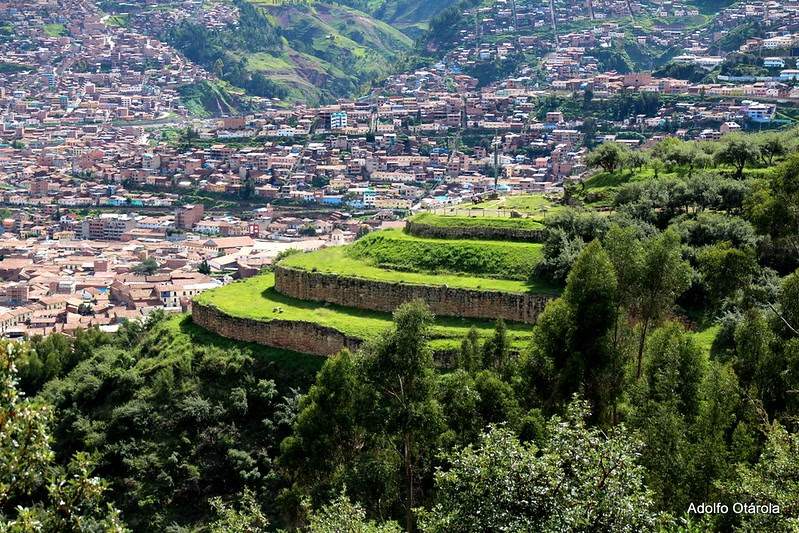
Located in el corazón de los Andes (in the heart of Andes), Cuzco is a city with an ancient history. It was declared a UNESCO World Heritage Site in 1983.
Cusco (Cuzco) was an urban and economical center during its golden age, especially under the rule of Inca Pachacutec. The city was also an important religious spot.
What differentiates Cuzco from other cities of the area is the clear delimitations that the city had. Some parts of the city were for agriculture, others to produce handicrafts, and others for manufacturing.
The city of Cuzco succumbed to the Spanish invasion, who then built churches and palaces where temples and monuments of the Inca were before.
Today you can explore this city and enjoy the best of both worlds: the Spanish architecture that is present in the city as well as the ancient monuments and historic value of this place that once was one of the most important cities for the Inca civilization.
Check out more about this UNESCO Peru World Heritage Site in this official post.
5. Historic Centre of Lima (El centro histórico de Lima)
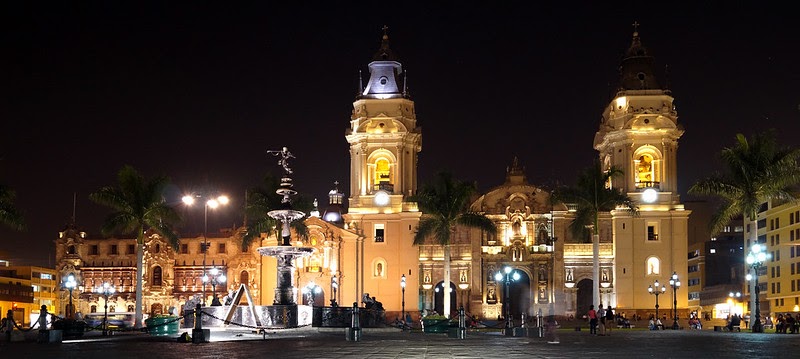
Also known as la Ciudad de los Reyes (the City of the Kings), Lima—the capital city of Peru—was the most important city for the Spanish during the time of the Colony.
Because of the constant earthquakes that hit Peru the city has suffered serious damage through the years. But even with all that some of its most important monuments and buildings are still standing and you can visit them!
One of the most important places is el Convento de San Francisco (the Convent of San Francisco) which is the largest convent in South America.
If you are a fan of history and architecture, Lima is the perfect city for you to visit. This place is the perfect merge of old and new, with buildings designed and built by artisans, local artists and architects, and master builders of the Old Continent.
Lima was declared a UNESCO World Heritage Site in 1988. If you want to learn more about what to do and what makes this city such an awesome place, check the official UNESCO Perú World Heritage Site blog entry.
6. Historical Centre of the City of Arequipa (El centro histórico de la ciudad de Arequipa)
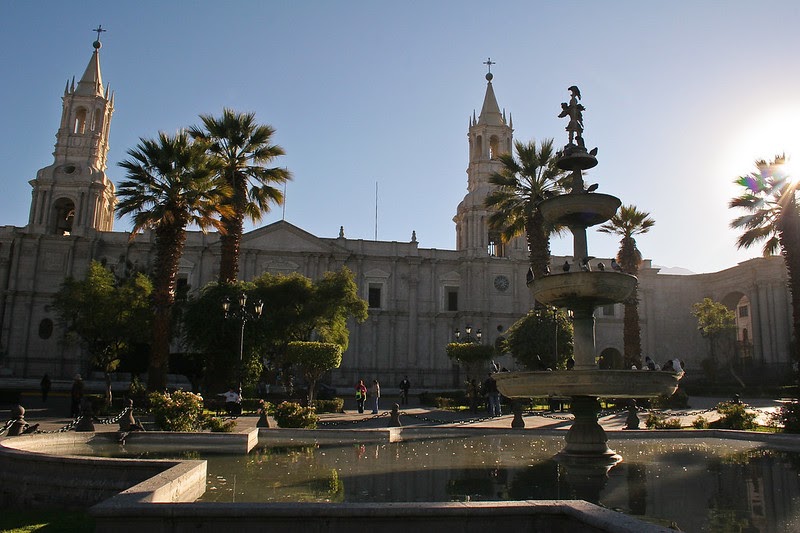
The city of Arequipa is amazing!
Located in the Province of Arequipa, 16 hours from the city of Lima, this place will surely amaze you if you have the chance to visit it.
The most important and impressive fact of Arequipa is that the buildings in the Historical Center are built with a volcanic rock called sillar. The architecture in this place is an amazing example of European and native building techniques. Is amazing how the European design was slightly modified by the native workers who built the city.
You can explore Arequipa, and its strong-walled edifices, with charming open spaces and complex baroque decoration, full of history. But you can also enjoy the modern views and activities to enjoy this city.
Read more about why this city was declared a UNESCO Peru World Heritage Site in 2000 in the official blog post of UNESCO.
7. Lines and Geoglyphs of Nazca and Palpa (Las líneas y geoglifos de Nazca y Palpa)
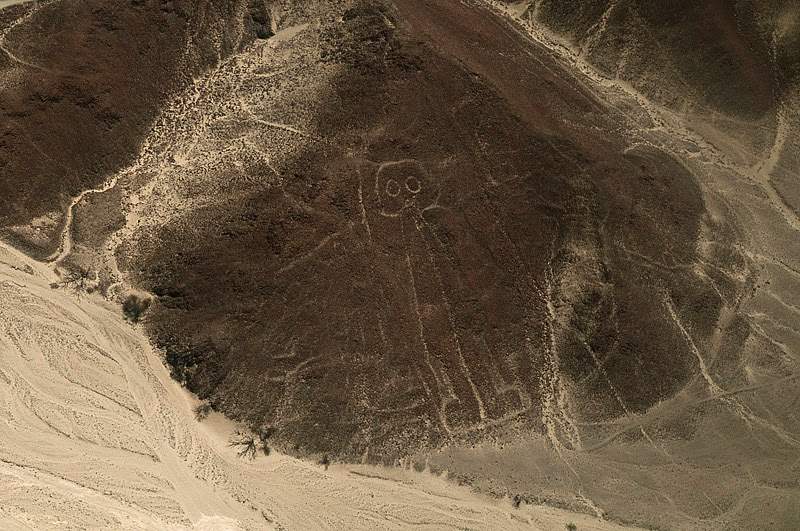
Located in the arid plains on the coast of Peru, 248 miles (400km) south of Lima, you will find the Geoglyphs of Nazca and Pampas of Jumana, known in Spanish as las líneas de Nazca.
These interesting figures are an archeological mystery. They cover around 173 square miles (450 sq km) and experts theorize they were traced in the sand between the years 500 BC and 500 AC.
The Nazca and Pampas lines depict living creatures, like humans and animals, but also represent vegetables, fantastic beings, and geometrical figures. The most amazing feature of these creations is their continuity and size taking into consideration how massive they are.
While there isn’t a clear reason for why they exist, there might be a connection between religion and astronomy.
The Nazca and Palpa Lines were declared a UNESCO World Heritage site in 1994, and are one of the most popular tourist destinations in Peru.
8. Qhapaq Ñan, Andean Road System (Sistema vial andino Qhapaq Ñan)
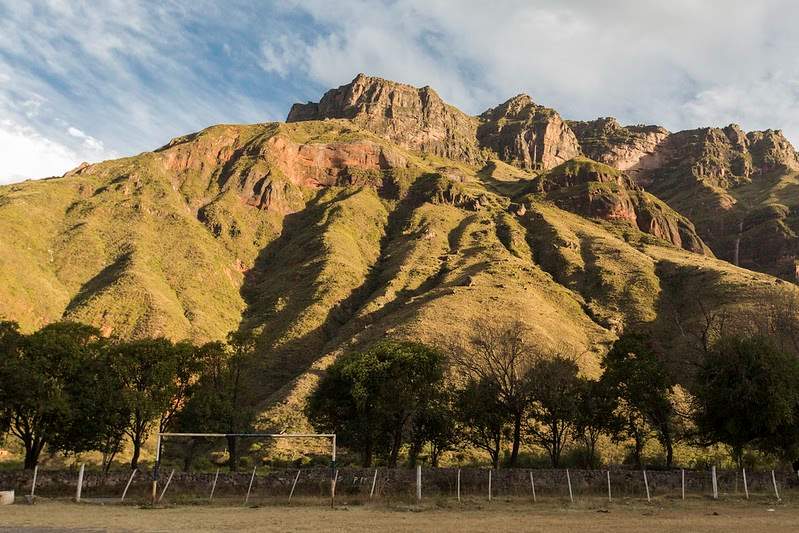
Qhapaq Ñan is not one, but a series of Inca road networks that has a length of about 18,461 miles (30,000km) that was built in the span of several centuries. The road reached its longest during the 15th century when it extended throughout the Andean mountain range.
The Inca built these series of roads using pre-Inca structures and the natural landscape. Qhapaq Ñan helped to facilitate transportation, commerce, communication, and defense for the Inca civilization.
The most amazing fact about Qhapaq Ñan is how massive it is! The roads were built in some of the most contrasting geographical areas in South America, from plains and coastal areas to the highest and coldest summits in the Andes. The road crosses between valleys, tropical forests, and deserts.
Qhapaq Ñan, to this date, is made up of 274 sites that, besides serving as part of the road, were also important for the culture, architecture, economy, and religion.
This road system was declared a UNESCO Peru World Heritage Site in 2014.
Read more about it and through what other countries it goes through in the UNESCO blog post.
9. Sacred City of Caral-Supe (La ciudad sagrada de Caral-Supe)
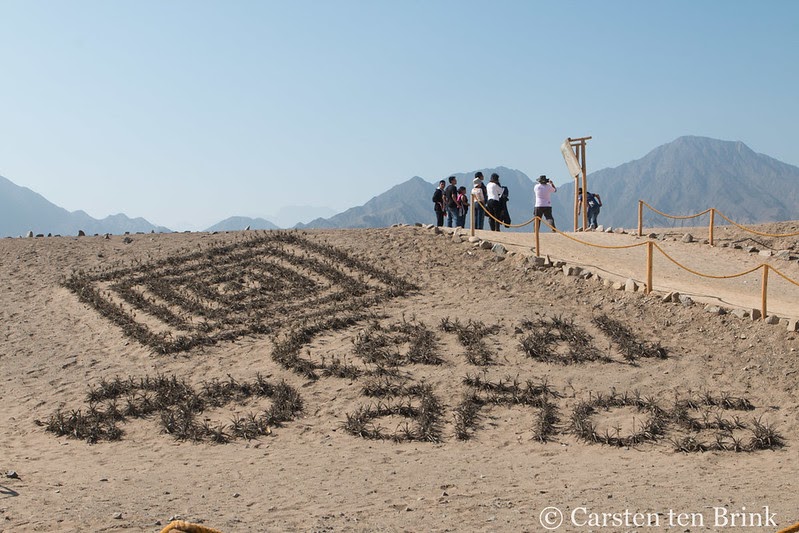
This is a 5000-year-old archeological site located in the coastal zone of Peru. It is located near the Super river, in a desert and dry valley.
Experts have discovered that Caral-Supe was founded during the late archaic period in the Andean area, which makes this place the oldest civilization center of all the American Continent.
The city is exceptionally preserved, and is amazing to watch how it’s architectural elements are still standing to this day, which is proof of how well designed and constructed were these buildings.
Some of the most important structures you can observe here are the monumental platforms made of stone and dirt, the circular patios, and the 6 pyramidal structures that made up the settlement of Caral.
Experts found here a quipu—an instrument used to tell stories and news—which proved to them how developed and complex this civilization once was.
You can learn more about this UNESCO World Heritage site here!
Natural
Of natural importance, there are two sites that are of huge importance for South America, and humanity in general. These places are:
10. Huascarán National Park (Parque nacional Huascarán)
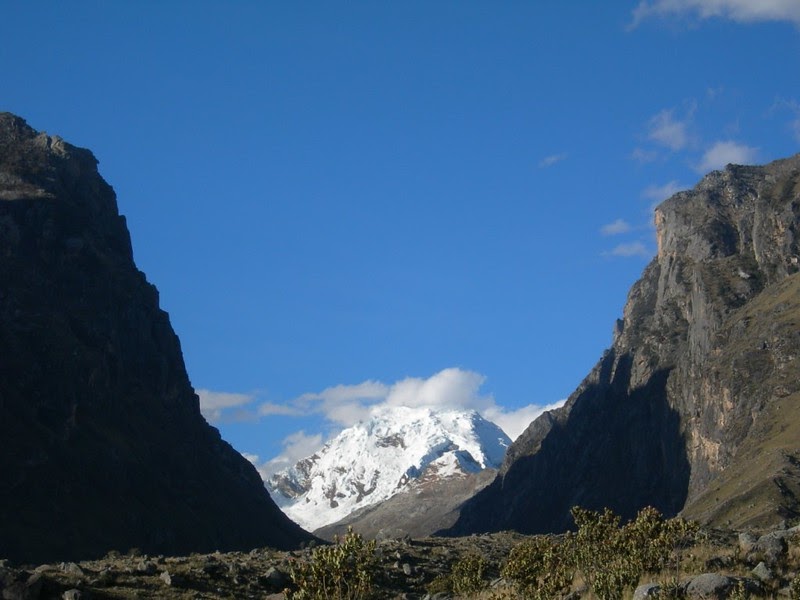
Located in Cordillera Blanca (White mountain range)—the highest tropical mountain range in the world—Huascaran National Park is located 22,204ft above sea level.
In Huascarán you can find some natural wonders, such as deep ravines, torrents, glacial lakes, and a lot of different kinds of plants, which you can’t help being amazed by such diverse natural beauty. Also, Huascarán is home to endemic species like the Andean condor or the spectacled bear.
Huscarán was declared a UNESCO Peru World Heritage Site in 1985. This park is definitely a place you have to visit if you enjoy nature and adventure.
For more information about it, check out the Peruvian tourism portal, and the UNESCO official blog post on it.
11. Manu National Park (Parque nacional Manú)
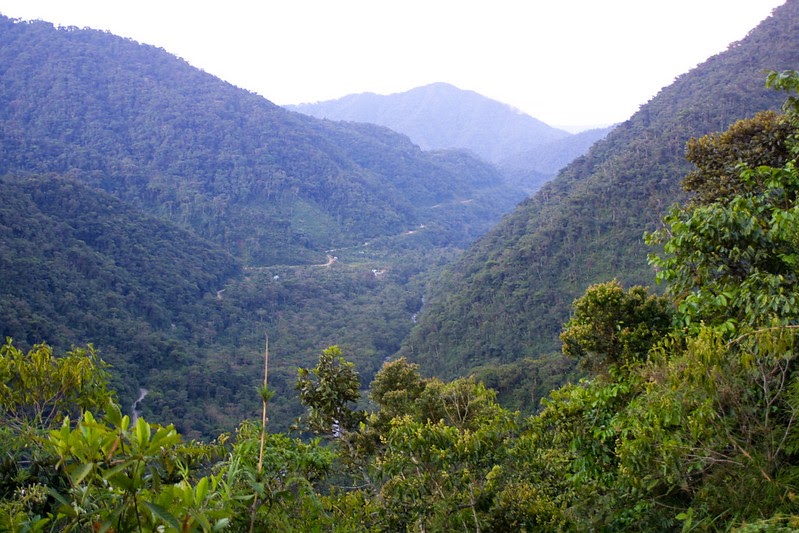
El parque nacional Manú (Manu National Park) is gigantic!
It has 1,500,000 hectares full of different forms of life, and the heights can go from 492ft above sea level to 13,780ft above sea level. The tropical forest is one of the highest areas in the whole park and is home to hundreds of different species of animals and plants.
Experts have identified, just in Manu, around 850 species of birds. The park is also home to mammals like the otter, the giant armadillo, and even jaguars!
Because of its natural importance and beauty, Manu was declared a UNESCO World Heritage Site in Peru in 2009.
Learn more about this impressive national park here.
Mixed
The mixed UNESCO World Heritage Sites combine both natural and cultural elements that have marked human history one way or another. These are the sites in Peru that fulfill that function.
12. Historic Sanctuary of Machu Picchu
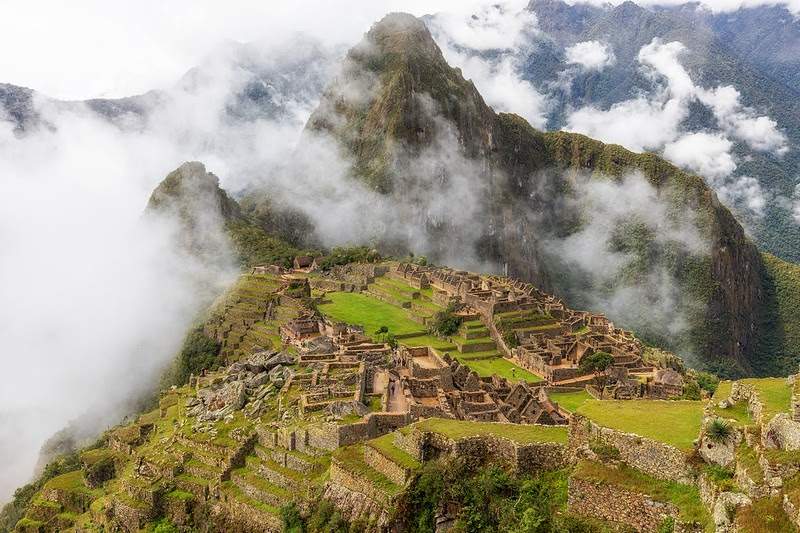
The city of Machu Picchu is definitely one of the most impressive archaeological sites that South America can present to us to this day.
Machu Picchu means montaña vieja or pico viejo (Old Mountain/Old Peak) in Quechua, and taking into consideration how many centuries old the mountain where it was built is, the name is quite fitting.
This ancient place is located on the eastern slope of the Andes, in the middle of a tropical forest 7,972 ft above sea level, and is considered the most important architectural creation of the Inca civilization.
The way the city is built makes it look like the Inca carved the buildings from the rocks instead of building them. The wildlife you can find here is really diverse, and the natural beauty of the place makes you feel like you are somewhere in paradise.
Machu Picchu was declared a UNESCO World Heritage Site in Peru in 1983.
Learn more about this ancient and magical city here, and for information on visiting it, you can check this page.
13. Río Abiseo National Park (Parque nacional Río Abiseo)
Located in the district of Huicungo, at the Province of Mariscal Caceres in the Department of San Martin, around 20 hours from Lima, el parque nacional Río Abiseo (Abiseo River National Park) was created in 1983 to protect the flora and wildlife of the rainforests in the Andes.
This park is full of endemic species, like the yellow-tailed woolly monkey, which is an endangered species and was considered extinct until a few years ago, when it was discovered it still lives here.
Just in this place, experts have uncovered more than 36 archeological sites in heights between 8,202 ft above sea level and 13,123 ft above sea level, which have helped us to have a better idea of how and where the civilizations before the Inca lived in the territory.
Rio Abiseo was named a UNESCO World Heritage Site in 1990.
Learn Spanish To Enjoy World Heritage Sites Like a Local
Did you know that, according to a study conducted by The Economist, a person can earn anywhere from $50,000 to $125,000 extra just by knowing a foreign language. This means that if you are searching for vacantes (vacancies) in education or jobs in Latin America or the United States, Spanish knowledge can help you to score your dream job!
What’s more, learning Spanish will make your experience traveling around all these 13 World Heritage Sites both easier and more meaningful. It is incredible how, when you speak Spanish, locals treat you with more confidence and familiarity thanks to the language barrier being broken.
What are you waiting for? Sign up today for a free 1-to-1 class today at Homeschool Spanish Academy, and let our native Spanish-speaking teachers from Guatemala help you begin or restart your Spanish learning adventure. Check out our programs and take a peek at our affordable prices and begin this new adventure with us!

Want to learn more about Latin American culture? Check out our latest posts!
- Celebrating Culture and Joy: The Magic of Carnival in Spanish-Speaking Countries
- 15 Mouth-Watering National Dishes of Latin America
- 60 Best New Year Quotes in Spanish 2024
- Discovering The Mayan Languages
- The 10 Most Common Spanish Surnames in The U.S
- Everything About Mexican Christmas Traditions
- What Is the Hispanic Scholarship Fund? Is It Legit?
- A Spanish Guide to Thanksgiving Food Vocabulary
- An Easy Vocabulary Guide to Describe the Post Office in Spanish - February 10, 2023
- Guatemala’s Biggest, Most Colorful Market: Chichicastenango - December 28, 2022
- 8 Sad Spanish Songs for When Your Heart Is Broken - December 6, 2022




